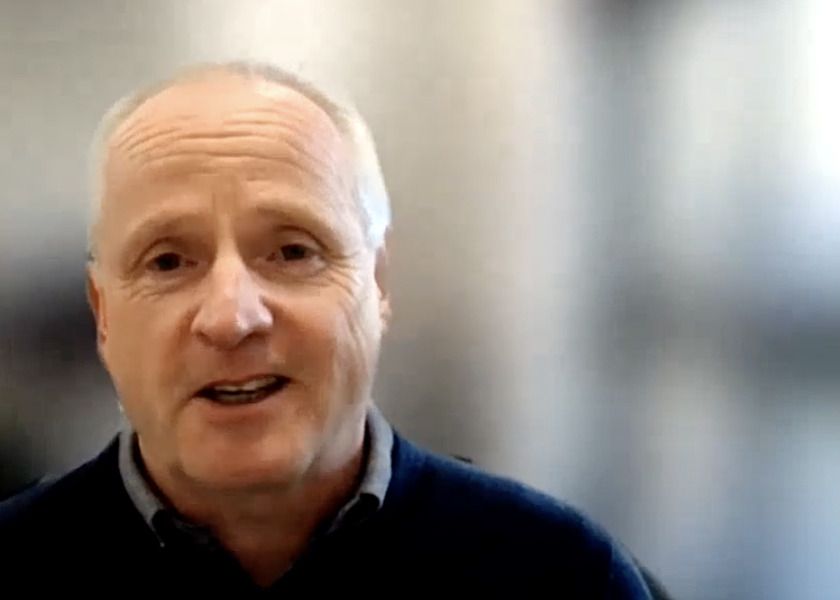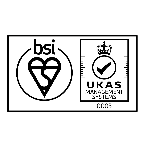
Tensology to discuss deterioration of ropes at ATS LEEA LiftEx
As part of LEEA’s YouTube channel, ‘Be my Guest…’ series, Jenny Eagle speaks to Barrie Mordue, MD, Tensology, about the importance of Magnetic Rope Testing on plastic sheaves for rotation resistant multi strand wire ropes. And how to perform a condition assessment on this type of rope.
Tensology is a consultancy and site services company for wire ropes. Barrie Mordue is the founder but recently transferred ownership to an Employee Ownership Trust, so now ownership is in the hands of the employees of the company.
“I’ve been involved with LEEA since our inception in 2011, and we became full members in 2017. We have attended or exhibited at nearly every LiftEx tradeshow and conference since that time and became an ATS (Accredited Training Scheme) member in 2019,” said Mordue.
“We focus entirely on wire ropes and the training scheme came from that. We're asked to provide specialist wire rope training for companies and we offer a Crane Rope Examiners course.”
As part of the ATS seminar on day 1 of the show at Liverpool Exhibition Centre on November 21, Tensology will be sharing its knowledge about the deterioration of crane ropes as well as a glimpse into its Accredited Training Scheme course, and how wire ropes deteriorate, particularly crane ropes.
“Ropes are used in lots of different applications. They've got thousands of different uses, but they tend to deteriorate in the same way regardless of the application,” said Mordue.
“The main challenges today are understanding the application of a rope and different rope constructions. It's trying to match the two and making sure that the actual wire rope that's chosen or that's made, perfectly suits the application.
“Unfortunately, some of our work is failure investigation, where ropes have remained in service after the time in which they should have been taken out. This can often lead to catastrophic failures.
“Part of our work is taking failed ropes and trying to establish the cause of failure and we use this information in our training.
“It's something you shouldn't really have to do. We shouldn't have to be doing failure analysis because it really shouldn't happen. If people are looking after their ropes, inspecting their ropes, examining their ropes correctly, then you shouldn't see failures, but unfortunately it still happens.”
Mordue explained that historically, wire ropes have deteriorated in a way that gives visual indications. So external corrosion for example where you can see rust on a rope. External broken wires are visible albeit if a rope is heavily lubricated, but it's sometimes quite difficult to spot.
But in recent times Magnetic Rope Testing (MRT) has come to the fore, particularly for crane ropes and rotation resistant crane ropes.
“Rotation resistant crane ropes and multi strand construction ropes have always had a tendency to deteriorate internally, but historically they also deteriorated externally because they were running in steel sheaves. So steel sheaves wore the rope out on the outside. You could see broken wires occurring. At the same time the rope was deteriorating internally,” said Mordue.
“With the onset of plastic sheaves in cranes, to save weight, what you find now is the outside of the rope is not getting anything like the same wear as it used to do. So the outside of the rope is sitting in a nice soft sheave with no wear and hence a slower rate of deterioration, whereas the inside is still deteriorating at the same rate that it always used to do.
“What we've found is that you're getting rotation resistant multi strand ropes actually failing without warning. So, you could do a thorough examination without using magnetic rope testing, pass a rope off as safe, and it could actually drop the load.
“So that's the real big thing in recent years. It's the use of plastic sheaves for rotation resistant multi strand ropes. We'll be talking about the use of MRT at LiftEx and how to do a condition assessment, particularly on this type of rope.
“We started presenting MRT with LEEA, prior to the ISO 4309, which is the standard for inspection and discard of crane ropes. The standard was revised in 2017, but prior to that date, we actually worked with LEEA at LiftEx and LEEA roadshows to inform LEEA members about the upcoming changes and the usage of magnetic rope testing, to try to alleviate this problem with multi strand ropes.
“It's something that's known about in the industry, but not known well enough. We still need to be ‘banging the drum about it because there's still a lack of real knowledge about the benefits of MRT. People are quite shocked when they learn about this. It's actually shocking really what's happening inside the rope and the implications of that as well.”
Watch the full video interview on LEEA YouTube here.
Click HERE to register for the ATS scheme on Day 1 of LiftEx.
Click HERE for more information about LiftEx on 21, 22 November in Liverpool.



